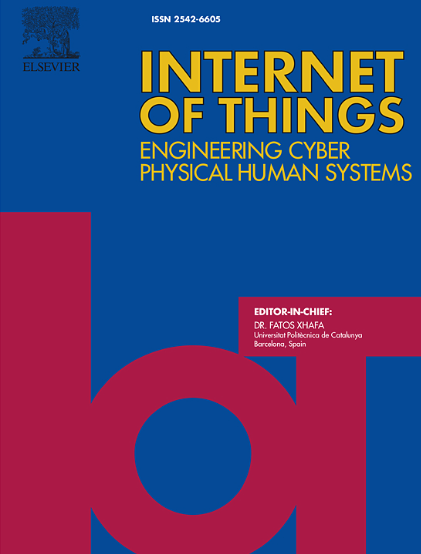基于深度学习的传输线差分继电器网络攻击检测方法
IF 6
3区 计算机科学
Q1 COMPUTER SCIENCE, INFORMATION SYSTEMS
引用次数: 0
摘要
针对电力系统的网络攻击有所增加,对控制系统和保护继电器构成严重威胁。线路差动继电器(ldr)由于其快速、选择性和灵敏的工作特性,被广泛应用于保护关键传输线。然而,尽管有这些优势,ldr仍然容易受到网络攻击,因为它们依赖于通信来交换测量值,这可能会受到损害。本文提出了一种新的基于深度学习的网络攻击检测方法,用于检测针对ldr的误脱扣和漏脱扣/故障屏蔽网络攻击。该方案仅依赖于LDR的本地测量,与以前的解决方案相比,增强了其安全性,因为本地测量更难以被黑客操纵。该方法基于深度学习神经网络(DLNN),提供了一个鲁棒模型来保护ldr免受网络威胁。DLNN模型在一个广泛的多状态数据集上进行离线训练,该数据集包括正常运行、内部故障和附近外部故障的可能条件。此外,采用贝叶斯优化方法对DLNN模型的超参数进行了优化。为了降低复杂性,集成了一个基于规则的系统来识别潜在的网络攻击类型,而不是像以前的研究那样将所有网络攻击场景纳入DLNN训练阶段。在正常运行、故障和网络攻击等场景下,对该方法的性能进行了评估。实验结果证明了该方案在检测网络攻击方面的优越性和有效性。该方案优于最近的文献,在测试数据集上实现了接近100%的分类准确率。即使在测量噪声的最坏情况下,分类准确率也略有下降,为99.3667%。本文章由计算机程序翻译,如有差异,请以英文原文为准。
A Deep Learning-Based Cyberattack Detection Method for Transmission Line Differential Relays
Cyberattacks on power systems have increased, posing serious threats to control systems and protective relays. Line differential relays (LDRs) are widely used to protect critical transmission lines due to their fast, selective, and sensitive operation. However, despite these advantages, LDRs remain vulnerable to cyberattacks as they rely on communications to exchange measurements, which can be compromised. This paper proposes a new deep learning-based cyberattack detection method to detect false-tripping and missed-tripping/fault-masking cyberattacks targeting LDRs. The proposed scheme relies solely on LDR's local measurements, enhancing its security compared to previous solutions, as local measurements are more difficult for hackers to manipulate. The proposed method is based on a deep learning neural network (DLNN), providing a robust model to protect LDRs from cyberthreats. The DLNN model is trained offline on a wide multi-state dataset that includes possible conditions of normal operation, internal faults, and nearby external faults. Additionally, the hyperparameters of the DLNN model are optimized using Bayesian optimization. To reduce complexity, a rule-based system is integrated to identify the type of potential cyberattack instead of incorporating all cyberattack scenarios into the DLNN training phase as done in previous studies. The performance of the proposed method is evaluated under various scenarios, including normal operation, faults, and cyberattacks. The results demonstrate the superiority and efficacy of the proposed scheme in detecting cyberattacks. The proposed scheme outperforms recent literature by achieving nearly 100% classification accuracy on the test dataset. Even under the worst-case scenario of measurement noise, the classification accuracy drops slightly to 99.3667%.
求助全文
通过发布文献求助,成功后即可免费获取论文全文。
去求助
来源期刊

Internet of Things
Multiple-
CiteScore
3.60
自引率
5.10%
发文量
115
审稿时长
37 days
期刊介绍:
Internet of Things; Engineering Cyber Physical Human Systems is a comprehensive journal encouraging cross collaboration between researchers, engineers and practitioners in the field of IoT & Cyber Physical Human Systems. The journal offers a unique platform to exchange scientific information on the entire breadth of technology, science, and societal applications of the IoT.
The journal will place a high priority on timely publication, and provide a home for high quality.
Furthermore, IOT is interested in publishing topical Special Issues on any aspect of IOT.
 求助内容:
求助内容: 应助结果提醒方式:
应助结果提醒方式:


